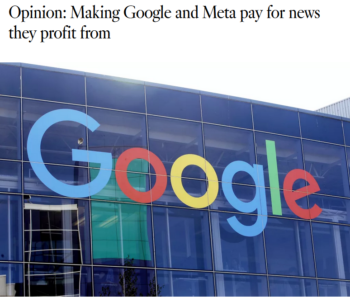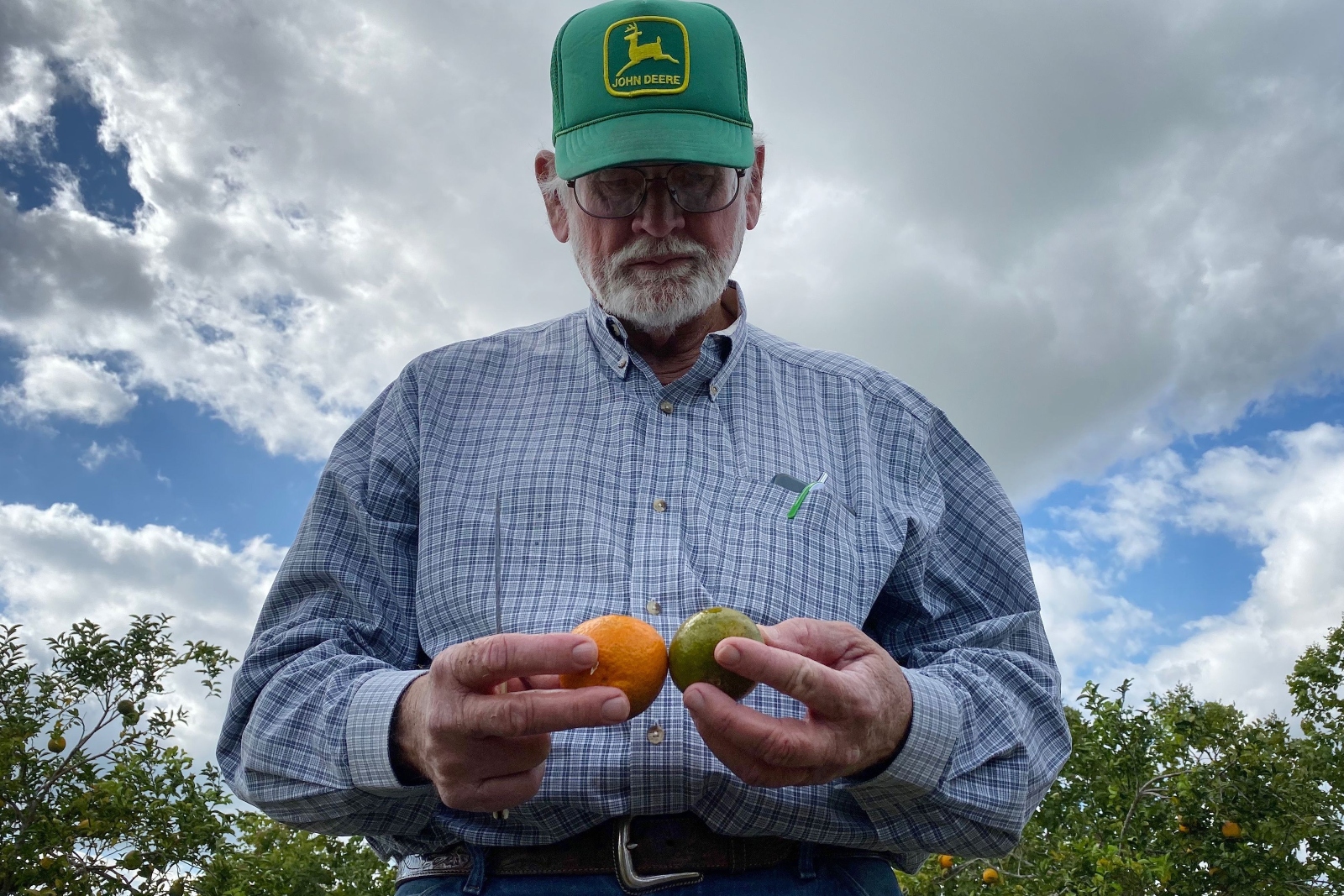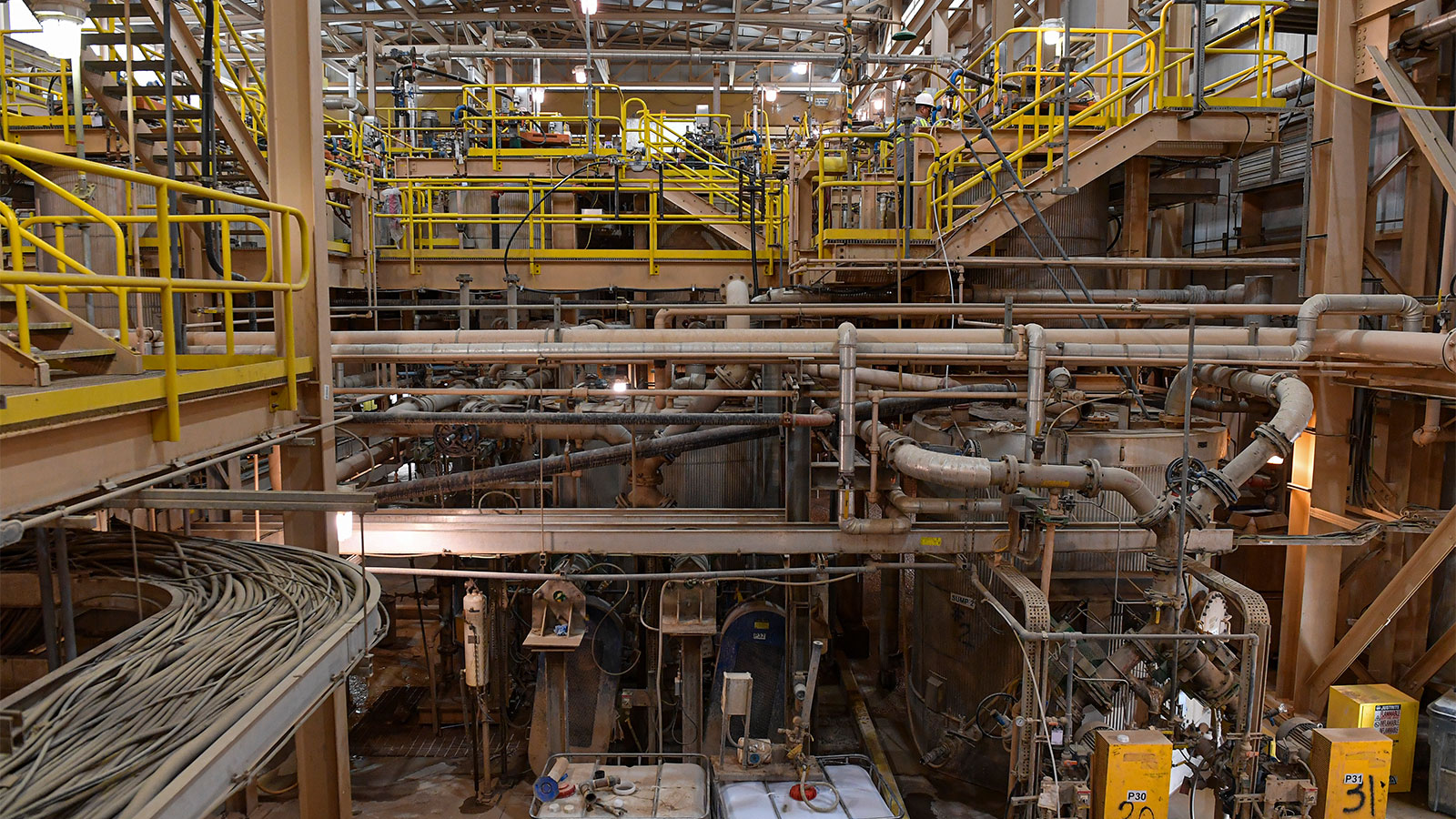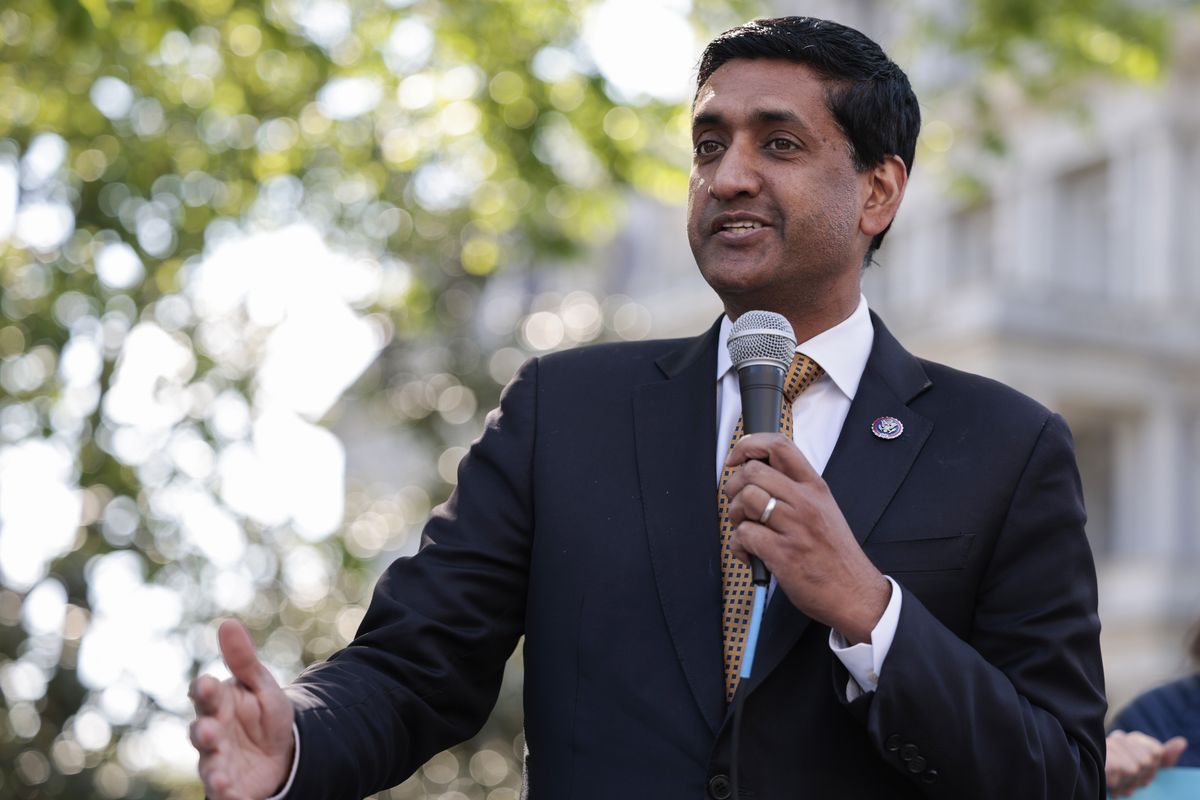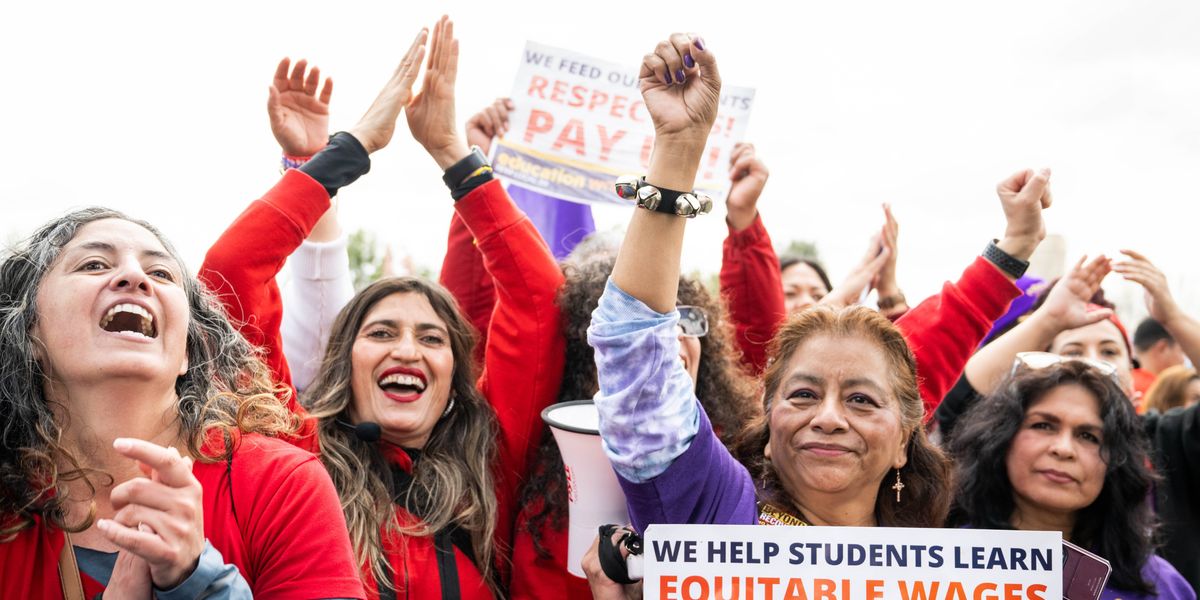
CNN (5/14/23) aired a special report on “What Happened to San Francisco?”—although what mainly happened to the city is that it became the target of right-wing attacks.
CNN has joined the media chorus decrying the death of San Francisco with a one-hour special (Whole Story, 5/14/23). On an episode hosted by Sara Sidner, the network declared that “the city by the bay is now at the forefront of the nation’s homelessness, mental illness and drug addiction crises,” while some “residents worry Northern California’s largest municipality could become a so-called failed city.”
The narrative of San Francisco’s demise has been building for some time. In the corporate press, the closure of a Whole Foods (Newsweek, 4/11/23; ABC, 4/12/23; New York Times, 4/30/23) is like the moment Afghans clung to a US Air Force plane as the nation fell to the Taliban. The story of this store’s exit is more complicated than criminal activity (48Hills, 4/11/23)—but no matter, the narrative holds that permissive policies protecting the homeless have allowed a zombie army of criminals to exert control over the city, countered only by a police force that can do nothing, Democratic politicians fearful to act and tech bosses cowering in fear.
CNN has had some more reasonable coverage of the city in the past, placing its crime statistics in a national context (4/7/23) and a fuller picture of why a much-hyped Nordstrom closure had less to do with crime and more with general retail trends (5/3/23).
But in the lead-up to the documentary, CNN (5/14/23) also told a heart-wrenching story about a San Francisco mother who lamented that the city’s policies led her son into drugs. She may genuinely feel that way, but that doesn’t make it so: West Virginia leads the nation in drug deaths (CBS, 8/2/22), with more than three times the per capita rate of California; why is there no media drumbeat against Gov. Jim Justice?
‘No one is safe’

A local ABC reporter’s hyperbolic comment to CNN (5/14/23) becomes a Fox News headline (5/15/23)—because it’s San Francisco.
It’s normal for the Rupert Murdoch–owned press (Fox News, 5/11/23, 5/15/23; Wall Street Journal, 5/3/23; New York Post, 5/4/23) to obsess about San Francisco falling apart. Tucker Carlson, formerly Fox News’ most-watched host and a San Francisco native, ran a weeklong special on the city called “American Dystopia” (Fox News, 1/6/20), which Media Matters for America (1/13/20) described as “dehumanizing homeless people.”
But this trend is embraced by the more centrist corporate press, too. The New York Times gave space to venture capitalist Michael Moritz (2/26/23) to lament the excesses of Democratic governance and repeatedly eulogize the city’s retail establishments (12/17/22, 2/9/23, 4/30/23).
When tech boss Bob Lee was fatally stabbed “in an enclave of high-rise condominiums,” the Times (4/7/23) took at face value statements from fellow tech bosses about how he was the victim of the out-of-control anarchy allowed by progressive leaders. As it turned out, Lee was likely the victim of sex-and-drug-fueled, tech boss–on–tech boss violence (New York Post, 5/12/23, 5/14/23).
In another example of media outlets showing their hand, CBS (4/7/23) reported, “A brutal and brazen attack on former San Francisco Fire Commissioner Don Carmignani” left “him battling for his life and neighbors on edge.” The person who had attacked the former commish was unhoused, fueling the sentiment that the streets were filled with roving sociopaths targeting people of all ranks, including civic leaders. Along with the Lee killing, “both violent assaults have ignited an intense debate over safety in the city.” The New York Post (4/7/23) highlighted the attack as evidence that “no one is safe” in San Francisco.

The New York Times (4/7/23) presented the stabbing of tech exec Bob Lee as a symbol of “deepening frustration over the city’s homelessness crisis”—before another “tech leader” was arrested for his murder.
But as with the Lee story, the media assumptions were premature. Video evidence later revealed that Carmignani had attacked the homeless man with bear spray and that the homeless man acted in self-defense, although Carmignani disputed this (CBS, 4/26/23; CNN, 4/27/23; LA Times, 5/11/23). In fact, lawyers for the homeless man in the case “alleged that Carmignani may be involved in other incidents in which homeless people were sprayed in the Cow Hollow and Marina District neighborhoods” (NBC, 4/27/23). Carmignani also has his own checkered past: he resigned from his commissioner post “one day after he was arrested in connection with an alleged domestic violence incident” (SFGate, 9/24/13).
At the Atlantic (6/8/22), Nellie Bowles—a California heiress (SF Chronicle, 10/28/21; LA Times, 6/14/22), former New York Times writer, and a participant in the conservative and lucrative anti-woke propaganda network (Daily Mail, 11/5/21)—brought an out-of-touch upper-class perspective to a San Francisco she, like CNN, called a “failed city.” Her heart no doubt bleeds for suffering people on the street, but she placed the blame on a regional culture of permissiveness:
This approach to drug use and homelessness is distinctly San Franciscan, blending empathy-driven progressivism with California libertarianism. The roots of this belief system reach back to the ’60s, when hippies filled the streets with tents and weed. The city has always had a soft spot for vagabonds, and an admirable focus on care over punishment. Policy makers and residents largely embraced the exciting idea that people should be able to do whatever they want to do, including live in tent cities and have fun with drugs and make their own medical decisions, even if they are out of their mind sometimes.
‘Failed city’
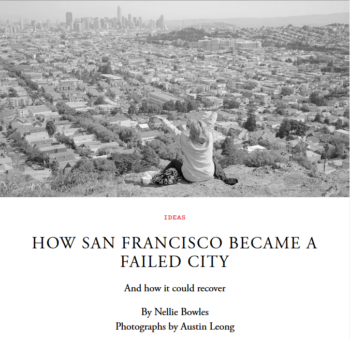
San Francisco’s homicide rate has dropped by half since the early 2000s—prompting the Atlantic (6/8/22) to run an essay on “How San Francisco Became a Failed City.”
The casual use of the phrase “failed city” is insulting hyperbole. The analogous term “failed state” was popularized in an early ’90s Foreign Policy article (Winter/92–93), which defined the “failed nation-state” as one “utterly incapable of sustaining itself as a member of the international community”—a definition that seems designed to invite intervention by said “community.” (See University of Chicago Law Review, Fall/05.) A failed state is a technical term for a place, due to internal mismanagement and external pressure, where civil society has broken down amid collapse in central governance. There is no major world body that considers the loss of a Nordstrom store (SF Chronicle, 5/3/23) a valid metric of societal meltdown.
But even if we forgive journalists for their flexible poetic license, the media narrative that San Francisco stands outside the US norm runs contrary to reality.
Centers for Disease Control and Prevention data shows that the highest rates of drug overdose mortality are in West Virginia, Tennessee, Louisiana and Kentucky, with California far behind. US Department of Agriculture research shows that the highest poverty states are Louisiana, West Virginia, New Mexico and Mississippi. Forbes’ list (1/31/23) of the most dangerous cities cites New Orleans, Detroit, St. Louis and Memphis (as well as Mobile and Birmingham, Alabama), but not San Francisco. San Francisco/Oakland does appear on the list of cities with the highest homelessness rates—but seven cities have higher rates, including New York City, Los Angeles and Las Vegas.
Surreal media narrative

Toro Castaño (KQED, 9/27/22) on homeless “sweeps”: “A lot of things they’re taking are warm clothes, warm jackets, blankets, things that you need just to survive.”
It’s a surreal media narrative for Zal Shroff, a senior attorney at the Lawyers’ Committee for Civil Rights of the San Francisco Bay Area, who recently helped win an injunction against what the group calls the city’s discrimination against homelessness. “On paper, the city has 3,000 shelter beds for 8,000 unhoused people,” he told FAIR, noting that while residents may be frustrated with street homelessness, there are often few places for the homeless to go.
“There is no avenue for an unhoused person to seek shelter. You can only get it after you’ve been harassed by police and beg for it,” he said. “You can’t go to the police and ask, they have to threaten you with citation and arrest, and then maybe they’ll ask to see if there is a shelter bed.”
Despite the media narrative about the city’s lawlessness, LCCRSF’s summary of the lawsuit states—and so far, one court agrees—that the city’s unhoused population are subjected to “brutal policing practices that violate [their] civil rights.” As Toro Castaño (48Hills, 9/27/22), who was homeless in the city from 2019 to 2021, told the court, “I was harassed by San Francisco Police Department (SFPD) and Department of Public Works (DPW) staff several times a week for the entirety of the two years I was homeless.” He noted in the court papers that while living on the street in May 2020, he was “harassed by police officers from the Castro beat every day for five weeks.”
KQED (9/27/22) noted that “Castaño had his belongings taken from him by the city four times during the pandemic, according to the complaint,” and that “while Castaño was unhoused, he said he was asked to move nearly every day.”
As Sarah Cronk, an unhoused person said in court papers, “If the City does not have adequate shelter or housing for us, then it should not be harassing us.” She and her partner “are just trying to scrape by and build as much of a life for ourselves as possible—with both dignity and safety,” Cronk said, but the city government “makes that impossible for us.”
This is hardly the “lunatics are running the asylum” image the media would have the public believe is the case.
For Shroff, the situation is frustrating, because while the injunction is meant to stop police harassment of the homeless while encouraging more affordable housing and shelter services, in the city’s narrative, his organization is calling for outright anarchy (SF Chronicle, 1/23/23; Law360, 4/26/23). “That’s the narrative that’s out there and is winning the day in the press,” he said, “which is interesting, because we’re winning this case.”
Myth of soaring crime

San Francisco did have a high murder rate in the early 2000s, but it has since fallen dramatically, to close to the US and California averages.
And then there’s the mythology of the city’s soaring crime. As the San Francisco Standard (12/22/22) reported, the city’s “crime totals cratered in 2020 when the city hunkered down for the first waves of Covid,” and then rose again. But “crime in San Francisco has not yet increased to pre-pandemic levels—with a few key exceptions.”
The online news outlet said crime rates “have fallen tremendously since peaks in the 1990s, which mirrors trends in cities across the country,” and that the “city’s most recent crime spikes came in 2013 for violent crime and 2017 for property crime.” (To put this admission into perspective, the Standard is financed by the aforementioned Michael Moritz.)
SFGate (1/7/22) also noted that violent crime rates in San Francisco matched national trends, and were not national outliers. Despite ideas of the city’s lawlessness and left-wing calls to “defund the police,” the “San Francisco Police Department budget increased overall by 4.4% from 2019 to 2022” (KGO-TV, 10/13/22), and Mayor London Breed has called for “a $27 million budget supplemental to fund police overtime citywide” (KGO-TV, 3/8/23). The right blamed the property crime spike on former District Attorney Chesa Boudin, but with his recall (FAIR.org, 7/11/22), there is no longer a George Soros–backed boogeyman to hold up as a scapegoat (The Hill, 6/9/22).

Oddly enough, the “failed city” has “the fastest growing economy in US” (SFGate, 11/16/22).
And while it is true that the city’s population has decreased (SF Chronicle, 1/26/23), the housing market is still hot, “with rents returning to pre-Covid levels, and a median one-bedroom there now priced at $3,100 a month, up 14% and the highest in two years” (Bloomberg, 7/26/22). The city’s tourism economy is currently booming, after the pandemic hurt the sector (SF Chronicle, 3/21/23). The city’s unemployment rate had been sitting at a low 2.9% (KPIX-TV, 3/10/23; SF Chronicle, 4/21/23) and has only recently spiked—not because of some progressive City Hall policy, but thanks to nationwide layoffs in the locally concentrated tech sector (SF Chronicle, 4/21/23). One report (SFGate, 11/16/22) showed that the “San Francisco Bay Area led the country in economic growth in 2022, with a 4.8% increase in GDP.”
The skyrocketing wealth is connected to the homelessness problem, Schroff said. While there is a mythology that street homelessness in San Francisco is the result of outsiders traveling there for the services and the mild weather, Schroff notes that LCCRSF research has shown that a bulk of unhoused people are long-time area residents who cannot find shelter.
The group’s lawsuit said “San Francisco failed to meet state targets for affordable housing production between 1999 and 2014—ultimately constructing 61,000 fewer very low-income units than needed.” From “2015 to 2022, the city only built 33% of the deeply affordable housing units it promised, and only 25% of actual housing production went to affordable housing.”
“The mental health services and the drug addiction services are robust, but that doesn’t solve that two thirds of unhoused people are reporting that they can’t find affordable housing,” Schroff said. “There is no exit option.”
American Gomorrah

New York Post (10/15/22): “San Francisco is governed by a leadership that is so enamored of the city’s progressive, humanitarian self-image that the idea of enforcing basic laws—even ones that save people’s lives like controlling drug sales and consumption—has come to be regarded as reactionary.”
In a country where a state like Texas has seen six mass shootings this year (USA Today, 5/8/23), why is San Francisco the object of such obsession? The San Francisco Bay Area, in the imagination of the American right, is the closest thing America has to Sodom and Gomorrah. San Francisco is identified as the epicenter of gay liberation, the home of the hippies, vegan restaurants and streets where Cantonese and Spanish are heard as much as English. Berkeley, just across the Bay, was a primary site of 1960s student radicalism and counter-culture, and the flagship UC campus continues to be a dreaded symbol of state-funded academic wokeness (Berkeleyside, 12/12/18; Washington Examiner, 8/21/22; Daily Beast, 10/31/22).
Affluenza has cleansed the Bay of much of its bohemia, but its national political legacy lives on in Democratic establishment titans like Nancy Pelosi and Dianne Feinstein. The area’s tech industry, like Hollywood in the southern end of the state, is a lucrative capitalist sector that the right, not incorrectly, associates with Democratic voting (Open Secrets, 1/12/21; Wall Street Journal, 2/20/21).
So to paint San Francisco as an example of failed governance is, in the right-wing narrative, to prove that the progressive urban experiment has broadly failed. The Nazi Joseph Goebbels probably didn’t say, “Repeat a lie often enough and it becomes the truth,” but it remains a central principle of propaganda. The failure of San Francisco has been a drumbeat in the conservative press, and as a result, major corporate media are acting as if this is true, or at least arguable. CNN, the New York Times and the Atlantic, by buying into this mythology, are able to call into question compassion for the homeless and alternatives to aggressive policing.
In fact, the Washington Post (5/21/19) seemed a little lonely in the corporate press when it argued that it was an “earthquake of wealth” that permanently worsened the city’s character, not the poor or any overly compassionate social policy.
But all of the recent negative coverage surrounds the issue of homeless people. Homelessness and poverty are the tragic results of unfettered capitalism and raging inequality, whether it’s in rural West Virginia or in San Francisco’s Tenderloin. Drug addiction is a public health crisis that the US healthcare system neglects, like many other ailments. These media pieces aren’t appalled by the conditions that create seas of unhoused people, but are appalled that housed, professional people have to deal with them. The New York Times and CNN are in many ways different from Fox News and the New York Post, but this is where their worldviews meld.
This is media outrage focused not at systemic injustice, but based in disgust at the victims of injustice.
Correction (5/30/23): A previous version of this article incorrectly said that tech boss Bob Lee, a former resident of the Bay Area, was killed “near his home.”
The post The Character Assassination of San Francisco appeared first on FAIR.
This post was originally published on FAIR.
